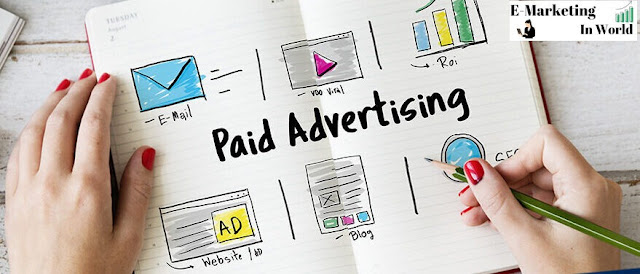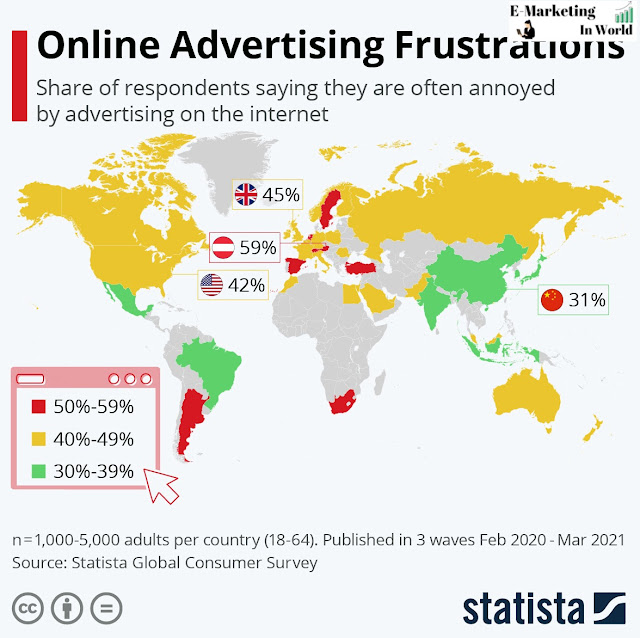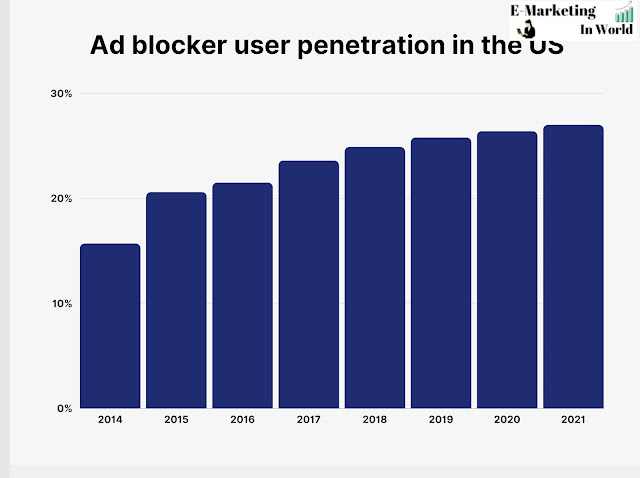 |
| Paid Marketing vs. Organic Marketing |
Paid marketing and organic marketing are important terms in online marketing that belong together, but also have differences. It is worth knowing the advantages and disadvantages to fully exploit the benefits of a respective implementation, as well as being aware of the disadvantages.
Especially in the present time, when the digital world has become indispensable and certain measures act as a competitive advantage, an online marketing strategy should not be missing in the business plan. Everything you need to know about paid advertising and organic advertising can be found in this article.
What is paid marketing?
As the name suggests, paid marketing is, which usually takes the form of advertisements. Via Google's advertising network or social ads such as Facebook, Instagram, and LinkedIn &; Co., advertisers reach a large number of people very quickly.
This strategy is very popular with companies that want to build a business in a very concise or plan to target their consumers seasonally. With paid advertising, companies with an already small budget can increase their awareness very quickly and strengthen their presence on the web.
Paid ads do not have a direct impact on organic search. However, the evaluated data can be used for search engine optimization or other marketing measures. We will explain more detailed insights into the interaction of organic advertising and paid marketing in the next sections of this article.
Pay-per-click (PPC) as part of paid marketing
Pay-per-click (PPC) is an important billing method in paid marketing. Every time users click on an ad, advertisers pay a certain amount. Typical PPC campaigns are placed at the beginning and end of the Google search results ( SERPs ).
The advantage of PPC advertising is that results are achieved very quickly without a company having to invest a lot of effort and requiring big budgets. It is irrelevant whether the company was just founded or the website has been on the market for a long time.
Companies can use PPC campaigns to generate leads and sales very quickly, thereby increasing website traffic. The data obtained from the campaigns is very valuable for further marketing measures such as SEO to improve online presence and generate sales.
Despite all this, it is important to remember that some customers click on the ad and immediately leave the website without taking any action, but advertisers still pay for the click.
Paid marketing is primarily used to:
- to increase brand awareness,
- to generate new leads,
- to draw attention to offers, events, innovations, etc. and
- Increase conversions such as e-commerce sales.
How is organic marketing defined?
The counterpart to paid marketing is organic marketing, rarely also called organic marketing. This marketing measure aims to generate natural traffic to obtain the best possible long-term ranking in the search result pages (SERPs) of the search engines and to generally increase visibility - especially compared to the competition.
As in paid marketing, increasing brand awareness and generating leads are other important goals. Organic marketing, as the name suggests, is all about organic traffic. This means that only traffic that you did not pay for is taken into account.
The order of the results is generated by specific algorithms of search engines such as Google, Bing & Co. Depending on how well an online presence meets these requirements, a URL will appear higher up in the SERPs.
An organic marketing strategy usually consists of SEO, i.e. an analysis of the existing traffic, followed by a keyword analysis, optimization of the existing content, or production of new content. It is important to continuously monitor performance and make improvements.
Organic marketing includes the following measures:
- blog article
- Organic social media posts
- guest posts
- User Generated Content
- Search Engine Optimization (SEO)
- PR
Paid Marketing vs. Organic Marketing: What are the differences?
Many companies now rely on paid social media because messages can be spread quickly and in a targeted manner. Whether advertisements on social media or in search engines: In the meantime, cooperation with bloggers and influencers are increasingly being used.
These measures are not directly part of a paid strategy but are also promising. Ideally, a company not only relies on paid content but also increasingly on organic measures. The main difference between paid and organic marketing is that the former is paid for while the latter is built naturally.
Paid marketing focuses on targeting larger groups that turn out to be the ideal customers. Furthermore, the generation of leads - usually via landing pages provided for this purpose - is an important KPI ( Key Performance Indicator ) in this area.
Popular conversions in paid marketing are contact requests or phone calls. In e-commerce, paid marketing via shopping campaigns is particularly common. Here, conversions such as products in the shopping cart or purchases are tracked.
Paid ads also play a role in employer branding. Since paid campaigns can be implemented very quickly and are effective immediately, it makes sense to communicate vacancies via this channel. In general, paid media marketing, therefore, strengthens all owned media channels and generates more traffic there.
Another benefit of paid media is that results can always be tracked and measured. One of the most relevant target figures from the paid area is the ROAS (return on ad spend). This metric indicates how much profit a company has made per advertising budget in euros.
With organic search marketing, brand awareness is an issue in particular by increasing visibility through SEO in search engines. The aim is to rank as high as possible in search engines in the long term. To increase visibility, the right content is crucial. Followers on social media follow a page not only because they are interested in the product, but also because of the interesting and entertaining content.
Bill Gates, the co-founder of Microsoft, was not wrong when he said “Content is king”, because the quote has become one of the most well-known in marketing. Websites also live from exciting content, which on the one hand should be written in a customer-oriented manner and on the other hand meet the requirements of the search engines.
In addition, with an organic strategy, you maintain your relationship with customers by revealing your expertise and specialist knowledge and thus binding them to the company - all without additional costs. The only budget needed to do this is purely to pay for professionals or to acquire expertise in the field.
The benefits of paid marketing
1. Reaching a large audience
Media such as search engines or social media platforms have a very high number of users. You can use paid ads to generate a high reach very quickly. Paid marketing has a supporting effect, especially when introducing new products, to quickly increase your awareness.
2. Addressing the ideal customers
Paid marketing allows you to address the ideal target group perfectly. You can also reach your customers by addressing them locally at any location - after all, paid marketing is location-independent. This allows you to control exactly who should see your ads and collect even more data about the target group.
3. High lead generation
An important indicator in paid marketing is the number of leads. Paid marketing can often generate leads very quickly with a small advertising budget. Examples of ads that generate leads are newsletter sign-ups, short opinion polls on a topic, or online store sign-ups. Potential customers are often led to a corresponding landing page.
Disadvantages of Paid Marketing
1. Existing competition
Especially in the field of paid marketing, competition never sleeps. Your ads are constantly competing with other companies. It is therefore important to get a feeling for the right customer approach. Keep an eye on the competition and don't miss any trends.
2. High cost
As the name suggests, paid marketing comes with a cost. Since Google Ads, for example, pays for the cost per click, 5 euros are often not enough. The aim is to get your budget back using the right keywords and target group. The best way to do this is to gain experience through A/B testing.
3. Advertising is perceived as annoying
Many consumers find advertising to be rather annoying and perceive it negatively. According to a survey on Statista (2020), 42% of respondents said they were annoyed by internet advertising in the US.
 |
| Paid Marketing vs. Organic Marketing |
29% even use an ad blocker.
 |
| Paid Marketing vs. Organic Marketing |
The advantages of organic marketing
1. Sustain high traffic
If a company has already achieved high traffic and gained loyal followers and subscribers, this is also usually maintained through organic activities such as SEO. With paid marketing, on the other hand, traffic drops very quickly as soon as the activities are stopped. Since the interests and needs of consumers are constantly changing, you should keep an eye on them and adjust your organic marketing accordingly.
2. Traffic is free
Organic marketing is primarily free because no direct budget is required for this. The only costs incurred are professional fees or fees for acquiring expertise. However, it should be considered that traffic does not build up overnight, but is generated over time.
3. Strengthening the customer relationship
Brand awareness and customer loyalty are relevant topics in organic marketing. You strengthen the relationship with your existing and potential customers through customer service, exciting topics, entertainment, or a blog with interesting content. Strongly loyal customers can become important stakeholders and should be considered in your marketing strategy.
The Disadvantages of Organic Marketing
1. Traffic build-up takes time
Building up relatively constant traffic that tends to increase does not happen overnight, but takes time. It usually takes several months to achieve a reasonable result from SEO activities.
2. Direct measurability is difficult
The activities of organic marketing can be tracked using internal tool statistics and Google Analytics data. However, the exact impact of organic marketing on customers is difficult to pin down. Because who is sharing what content or how word-of-mouth is developing is difficult to track.
3. Performance often difficult to capture
The effects of organic marketing measures often only become apparent after weeks or months, which is why performance such as ranking changes or the visibility of your website is difficult to record. It is therefore important to continuously evaluate the data to be able to recognize continuous changes in ranking or visibility. Ongoing reports are great support here.
Paid Marketing and Organic Marketing: More success through the harmonious interplay of both strategies
At the beginning of every online marketing strategy, there is the question of whether you want to focus more on paid marketing or whether you want to promote organic marketing. We recommend using the synergy effects of both marketing measures. In the following, you will find out how you can achieve better performance in the long term by combining both strategies.
Social Organic and Social Paid Marketing – Success with both strategies
For companies with new products or services, it's a good idea to promote them using social ads like Instagram or LinkedIn Ads. On social media, the content is casually displayed to the target audience between the organic posts. Social ads are therefore an effective tool in online marketing to address potential customers in a targeted manner and to increase awareness.
A good mix of paid, earned, and owned channels are usually the key to success. Therefore, you should also coordinate your organic marketing strategy with the social paid marketing strategy. Since the success of organic marketing is usually only visible after a few months, it is advisable to start activities early enough.
SEO and SEA - A successful interaction of both channels
The usual approach in online marketing is to start with SEO and SEA and then use ads a little less if necessary. In the long term, you should never completely do without paid marketing, because the implementation can be very worthwhile for certain products or groups.
Conclusion: Paid Marketing and Organic Marketing
In summary, it can be made clear that every business lives from not just marketing through one channel, but from a combination of organic and paid marketing that brings success.
For both strategies, it is important to know the target group exactly and to create a target group and competition analysis in advance - keyword competitive advantage - and then to carry out ongoing optimization. So use the mutual effect of paid and organic marketing as a foundation for your online marketing and start implementing it today!


Comments
Post a Comment